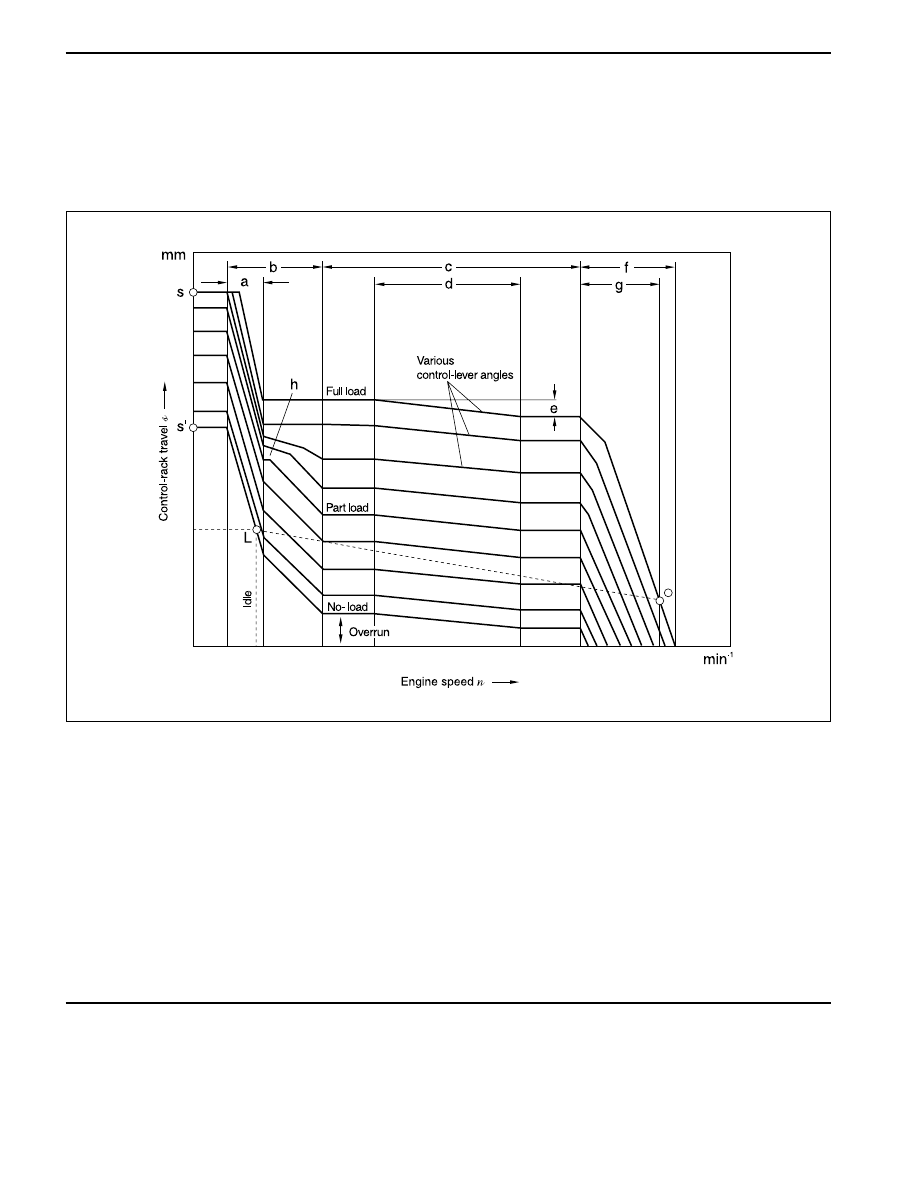SsangYong Rexton. Service manual - part 446

SSANGYONG Y200
1F3-4 DIESEL ENGINE CONTROLS
a Idle Range (Working Range of the Idle Spring)
b Extended Idle Range at No-Load and Minimum
Part Load (Working Range of the Idle Spring
and the Auxiliary Idle Spring)
c Uncontrolled Range
d Torque-Control Range (Working Range of the
Torque-Control Spring)
e Torque-Control Travel
f Speed-Regulation Range (Working Range of the
Governor Spring)
g Full-Load Speed Regulation to the High Idle
Speed
h Start of the Auxiliary Idle-Spring Shutoff
GOVERNOR
RSF Minimum-maximum-speed governor
The RSF mechanical governor was developed
specifically as a minimum-maximum-speed governor.
It is suitable for use in those on-road vehicles
(passenger cars and commercial vehicles) in which
YAD1FAC0
S Start Setting With Accelerator Pedal fully
Depressed (Cold-Start)
S ’ Start Setting With Accelerator Pedal Released
(Hot/ Warm Start)
L Low-Idle-Speed Setting
O High-Idle-Speed Setting
n
1u
Low Idle Speed
n
1o
High Idle Speed
n
vo
Maximum Full-Load Speed
n
1
Speed at Start of Torque Control
n
2
Speed at End of Torque Control
control requirements are restricted to low idle and high
idle (maximum) speeds.control requirements are
restricted to low idle and high idle (maximum) speeds.
In the uncontrolled range between these two speed,
the driver uses the accelerator pedal to directly adjust
the setting of the injection-pump control rack so that
the engine develops the right torque.